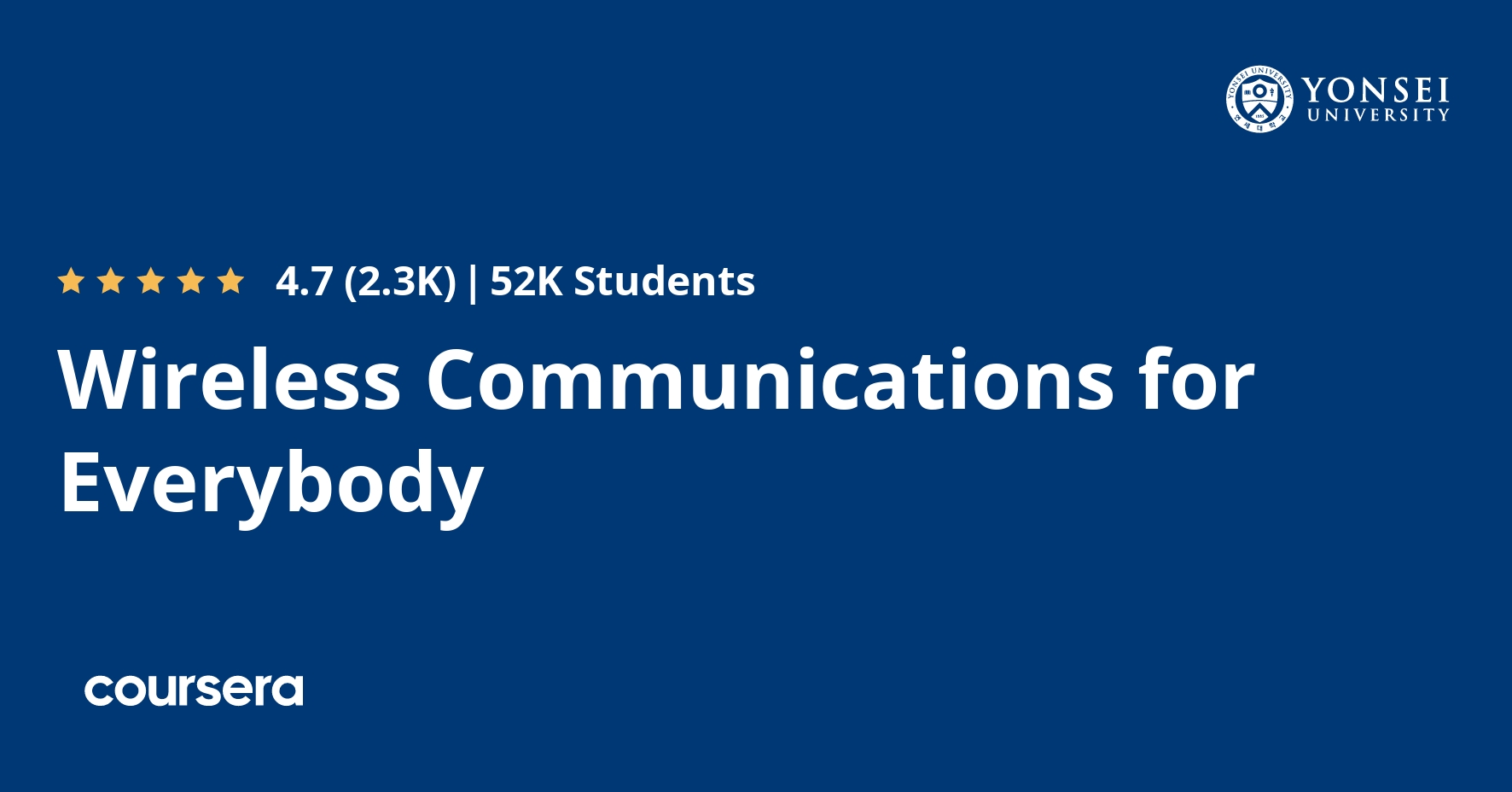Description
This course will provide an introduction and history of cellular communication systems that have changed our lives during the recent four decades and will become an essential and inseparable part of human life. The principles of wireless communication theory are covered with emphasis on the essential concept delivery to non-major learners in the easiest way. Then, it will be covered how such principles are realized and how multimedia services can be delivered in practical LTE cellular systems by which learners are connected and enjoys together in their lives.
After completing this course, learners will be able to understand
1. What a cellular system is and how it has been developed so far
2. The very basic principles how information can be delivered efficiently using radio
3. How such principles are realized in LTE systems.
4. How people can be connected and multimedia services can be delivered in LTE systems
What you will learn
Introduction and History of Cellular Communication Systems
In this part of the course, we will learn the introduction and history of cellular communication system. First, we will take a example of cellular communication system with cell phone. And then, learn about the what a cellular system is and how it has been developed so far. Lastly, we will briefly look into the concepts of future cellular systems.
Principles of Wireless Communication Theory
In this part of the course, we will learn the fundamental principles of wireless communication theory. I will raise five fundamental questions in the first lecture as follows: i) ‘how can we represent information into a binary format?’, ii) ‘how can information be transferred?’, iii) ‘how does wireless digital MODEM work?’, iv) ‘how can high-rate data be delivered reliably?’, and v) ‘how can many users access simultaneously?’. During the following 5 lectures, you will have the answers.
Principles of Wireless Resource Management
In this part of the course, we will discuss the basic concept of wireless resource management. I will raise six interesting questions as follows: i) ‘how does the interference affect the capacity of wireless networks?’, ii) ‘why does the cellular system look like as of today?’, iii) ‘Increasing the number of cells increases the capacity?’, iv) ‘how is 5G cellular being shaped?’, v) ‘how does the interference management increase the capacity?’ and Ⅵ) ‘how does scheduling increase the average capacity?’.
Multiple Antenna Technologies
In this part of the course, we will learn how multiple antennas can be efficiently used in different strategies for communication system enhancement. First, we look in to the basics of antenna, and then learn about the three main gains that are achievable by multiple antennas: array, diversity, and spatial multiplexing. Lastly, we briefly look in to the concepts of single-user MIMO and multi-user MIMO.




